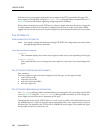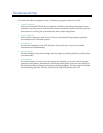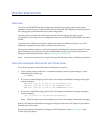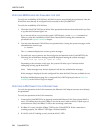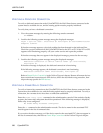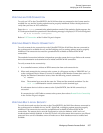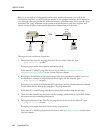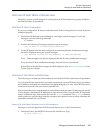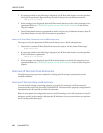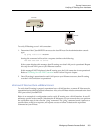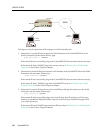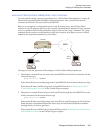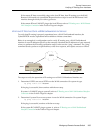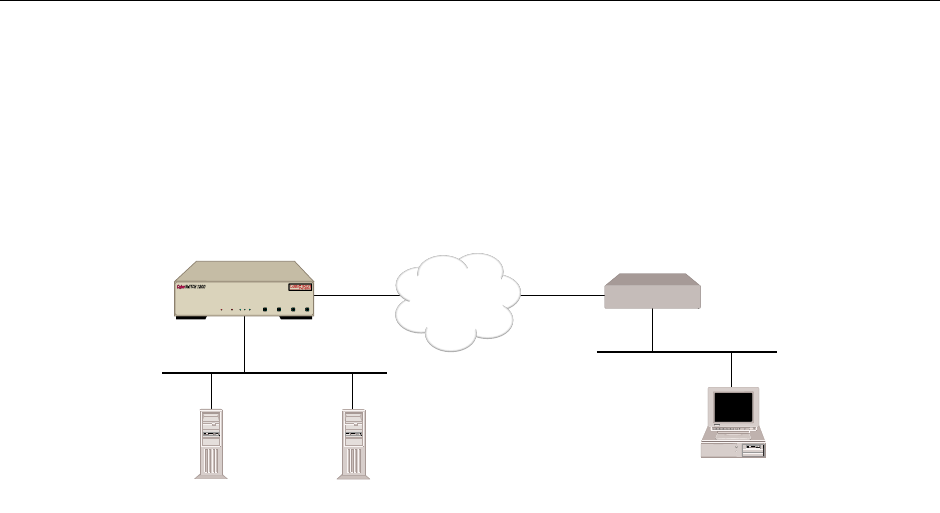
USER’S GUIDE
358 CyberSWITCH
Below is an example of a configuration used to verify multi-level security over an IP WAN
UnNumbered interface. It uses IP addresses specific to the example. Substitute the IP address of
your network when you perform the multi-level security verification steps. It also uses the “ping”
command. The “ping” command sends a packet to a specified host, waits for a response, and
reports success or failure. Substitute the equivalent command on your network.
The steps to verify multi-level security are:
1. Determine if the client PC can ping the Service Server. On the Client PC, type:
ping 100.0.0.2
<return>
If the ping is successful, then continue with the next step.
If the client PC CANNOT ping to the Service Server, refer to IP Routing over a WAN
UnNumbered Interface Connection in the Problem Diagnosis chapter.
2. Reconfigure the definition of the remote device in the device database to enable User Level
Authentication. Attempt to ping the Service Server again. On the client PC, type:
ping 100.0.0.2
<return>
If the ping is successful, disconnect the call. Ensure that User Level Authentication is enabled
for the remote device, then try the ping again. The ping should fail.
If the client PC CANNOT ping to the Service Server, then continue with the next step.
3. Telnet from the client PC into the central site. For example, telnet to 100.0.0.1, port 7003. Follow
the normal user level authentication process.
4. Once again, determine if the client PC can ping the Service Server. On the Client PC, type:
ping 100.0.0.2
<return>
If the ping is successful, then multi-level security is operational.
If the client PC CANNOT ping to the Service Server, refer to Multi-Level Security in the Problem
Diagnosis chapter.
ISDN
100.0.0.1
192.100.1.1
Remote
Device
Client PC
192.100.1.2
Ace Server
Service
Server
100.0.0.3 100.0.0.2
Telnet Port
to ACE 7003
WORKGROUP REMOTE ACCESS SWITCH
LAN
10BASE-TRXTXSERVICE
CH-2
D-CH
CH-1
SYNC
POWER
LINE
1
CH-2
D-CH
CH-1
SYNC
LINE
2
CH-2
D-CH
CH-1
SYNC
LINE
3
CH-2
D-CH
AGI
CH-1
SYNC
LINE
4



